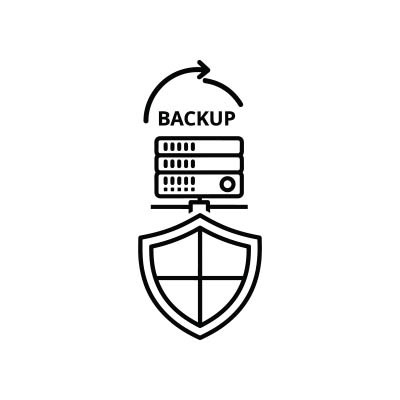Most businesses don’t have what it takes to survive a hardware failure or natural disaster, and we don’t mean in terms of “grit.” What we mean is in the sheer technological capacity to recover their data and continue operations. It’s bizarre, too, how easy data backup can be, provided you follow these three key tenets. With a little help from a qualified backup professional, your business can stay resilient even in the worst of times.
Phantom Technology Solutions Blog
Be honest: Do you have a real plan for the day your server goes dark? We're not talking about a little glitch—we mean a full, sudden stop due to a failed disk, a nasty strain of ransomware, or an accidental keyboard slip. For too many businesses, the "plan" is just that dusty external drive they plug in at closing time. This isn't a strategy; it's a prayer, and one that will go unheard when you need it most.
That false comfort is your biggest IT blind spot, because if a simple copy-paste job was enough, we wouldn't see businesses vanish after a single data incident. Stop crossing your fingers and let's get you a recovery plan that actually works.
How much data do you think your business stores? How much of that data does your business need to operate? Regardless of your answers to these questions, one thing is for certain: you need to take action to ensure your business’ data is never put in harm’s way needlessly. It should be able to survive in the face of great adversity, whether it’s from a fire, weather incident, cyberattack, or simple user error.
How much do you know about your business’ data backup infrastructure? Do you know how often data backups occur, or if they’re occurring at all? Regular backups are the key to a successful, sustained business, and multiple backups per day are your “Get out of jail free” card when you’re facing a data loss incident.
We cover data backup and disaster recovery quite a bit, and you might be familiar with some of the terms and strategies we discuss. Today, we’re taking a deeper dive into the 3-2-1 rule and its crucial role in your business’ disaster recovery plan. Let's explore how the 3-2-1 rule can strengthen or weaken your data infrastructure.
There is an almost comical laundry list of problems that all businesses should be prepared for, but what’s not funny whatsoever is what happens when you fail to do so. The term “BDR” is often used as an umbrella term to describe what kind of preparation your organization needs, and today, we want to dive into some of the details that you should know.
When it comes to your business’ data backup and disaster recovery, you want to have clear outcomes that you aim for, as well as metrics that help you gauge success. Today, we want to highlight some of the most important metrics associated with data backup and disaster recovery, as well as the importance of testing your systems. Trust us when we say that a solid data backup and disaster recovery strategy is crucial to the success of any business—including yours.
Data and technology drive modern business, and as such, data backup and disaster recovery are crucial to the continued success of any organization. There is so much at risk that it would be counterproductive to ignore these unforeseen disasters. Disaster Recovery as a Service, or DRaaS, is an effective way to combat the omnipresent threat of data loss.
We focus pretty heavily on data backup as an important solution that all businesses should use, and for good reason. It can be all the difference between losing your business’ future or preserving it. We know you don’t like to hear it, but investing in a proper data backup solution is well worth the cost, even if you never have to use it.
We often use the term “redundant” to describe technology, and it’s easy to see this word and think about it in a negative way. However, in business technology, the exact opposite is true, and redundancy is widely seen as not just an important component of any successful IT strategy, but a critical one. What does redundancy mean to your business technology, and how can you make sure you implement it in the appropriate way?
One of the best investments you can make in your IT infrastructure is implementing a data backup and disaster recovery solution. Not only is it a crucial part of any business continuity plan, but it also helps to future-proof your business in the event of a potentially disastrous scenario. There are three big reasons why you should consider implementing data backup and disaster recovery, and if you fail to do so, you are putting your company at risk for no real reason.












